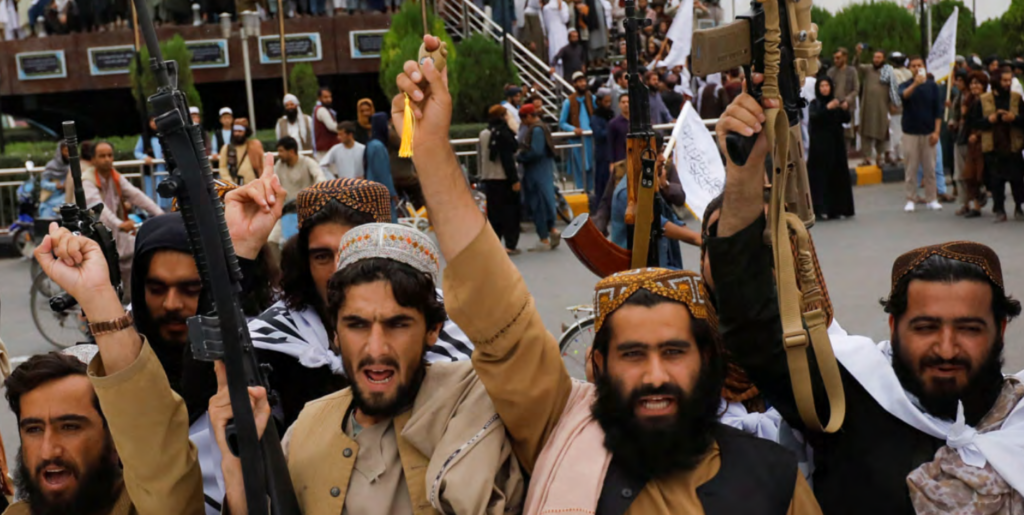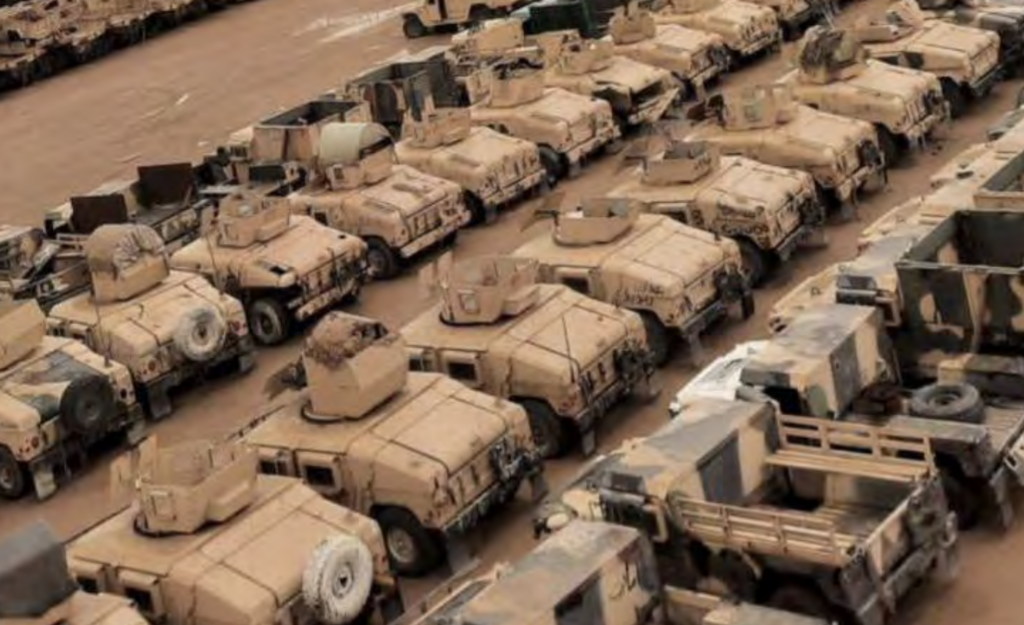On top of the failed US withdrawal from Afghanistan in August 2021 comes word of just how much US tax money was lost to waste, fraud and abuse.
A new report today from the Special Inspector General for Afghanistan Reconstruction (SIGAR), John Sopko, says about 1/3 of the $63 billion spent on Afghanistan “reconstruction” was not used for its intended purpose.

In August of 2021, the Islamic extremist Taliban re-took control Afghanistan after many American and Afghan lives lost fighting the group. US troops withdrew in a hasty and ill-advised manner that led to the deaths of more than 100 Americans and Afghans: the deadliest such withdrawal ever in US history including the Vietnam War.
Former President Trump and others criticized the Biden Administration for allowing the military to leave behind $7 billion in US military equipment, some of which the Islamic extremist Taliban have said to have repurposed for their own use.

The Inspector General says oversight of US money that has continued to flow to Afghanistan has been poor.
A Congressional hearing on the disastrous US withdrawal from Afghanistan, with Sopko and other officials testifying, takes place beginning at 10am on Weds. April 19 and can be viewed at this link:
Full hearing details and livestream:
Information and excerpts from the SIGAR’s April 19, 2023 report are below.
SIGAR’s 2023 High-Risk List identifies the five greatest sources of risk that may expose continuing U.S. assistance to waste, fraud, abuse, mismanagement, or mission failure:
1.) Taliban interference with the UN and NGOs
2.) Reliance on trust funds and multilateral organizations
3.) Loss of oversight
4.) The Afghan Fund
5.) Evacuating Afghan allies
…
Waste, fraud, and abuse were significant issues even when the United States had an oversight presence in Afghanistan. In fact, in response to reports requested by Congress, SIGAR conservatively estimated that nearly 30% of approximately $63 billion in U.S. appropriations for Afghanistan reconstruction from 2002 to 2019 that SIGAR reviewed was lost to waste, fraud, and abuse.
Since the Taliban takeover, most U.S. assistance to Afghanistan has been disbursed through two USAID accounts: International Disaster Assistance and the Economic Support Fund. While USAID hired a contractor to perform third-party monitoring and mandated the use of a multi-tiered monitoring approach to oversee its assistance prior to August 2021, these oversight methods have gained impor- tance since the withdrawal of U.S. personnel.
At the same time, State and USAID’s reliance on oversight provided by multilateral trust funds and PIOs, has grown as the U.S. lost visibility of the distribution of its assistance. While both USAID’s and the international community’s approaches are designed to compensate for a lack of in-country government personnel, SIGAR’s work has found major deficiencies in the efficacy of their oversight.
This report is issued at a time when Afghanistan is facing a humanitarian catastrophe brought on by the Taliban takeover of the country following
the U.S. withdrawal. The 2022 injection of some $3.3 billion in humanitarian assistance from the United States and other donors has managed to stave off famine, but this year the United Nations has issued the largest appeal for a sin- gle country in its history for another $4.6 billion that will, among other things, feed about 28.3 million Afghans, or two-thirds of the population. Yet Taliban interference with NGO and UN operations has placed this assistance at greater risk than ever before.
In particular, SIGAR has identified five areas of concern for Congress and the Administration to consider to ensure the success of U.S.-funded programs in Afghanistan:
- Taliban interference with the UN and NGOs
- Reliance on trust funds and multilateral organizations
- Loss of oversight
- The Afghan Fund
- Evacuating Afghan allies
…
TALIBAN INTERFERENCE WITH THE UN AND NGOs
Since the Taliban seized power in August 2021, it has been U.S. government policy to con-
tinue supporting the Afghan people without assisting the Taliban government in any way. Yet, the Taliban have increasingly interfered in the activities of the UN and nongovernmental organizations (NGOs) operating in Afghanistan, limiting their ability to provide aid. The Taliban also have accessed international funds through the imposition of customs charges on shipments coming into the country, taxes and fees directly on NGOs—as had the Ghani administration— and additional fees on vendors like commercial landlords, suppliers, and cell-phone companies that sometimes pass the costs along to NGOs.
RELIANCE ON TRUST FUNDS AND MULTILATERAL ORGANIZATIONS
Since the United States withdrew from Afghanistan, the U.S. government has become more reliant upon other institutions to actually perform the assistance work with U.S. funds, in particular international and multilateral organizations. However, SIGAR has found that international organizations receiving U.S. funding have not provided the information or oversight necessary to make informed decisions about program effectiveness.
LOSS OF OVERSIGHT
With the collapse of the Afghan government in August 2021, the United States lost the ability to directly observe the execution of its assistance programs, raising significant oversight chal- lenges and greatly increasing the risk that aid to Afghanistan will be diverted before it reaches those most in need. The State Department and the U.S. Agency for International Development (USAID) have developed alternatives to U.S. government personnel directly observing the distribution of assistance—most notably relying on third-party and multi-tiered monitoring—but the loss of in-person visibility inevitably has hurt the overall oversight mission.
THE AFGHAN FUND
Last year, the U.S. Departments of Treasury and State jointly announced the establishment of the Fund for the Afghan People—also known
as the “Afghan Fund”—to provide $3.5 billion
in frozen Afghan central bank assets for the benefit of the Afghan people. The Afghan Fund’s long-term goal is to preserve undisbursed mon- ies for eventual return to Da Afghanistan Bank (DAB). However, the Taliban’s interference in DAB poses risks to the Afghan economy and to Afghan Fund-held assets should they eventually be returned.
EVACUATING AFGHAN ALLIES
Between 2001 and 2021, tens of thousands of Afghans in and out of government risked their and their families’ lives by partnering with U.S. officials to secure the country, establish rule of law, and build democratic institutions. Once the United States withdrew and the Taliban seized power, the dangers to these Afghans soared. However, bureaucratic dysfunction and under- staffing have undermined U.S. promises that they would be protected in a timely manner.

Visit The Sharyl Attkisson Store today
Unique gifts for independent thinkers
Proceeds benefit independent journalism








